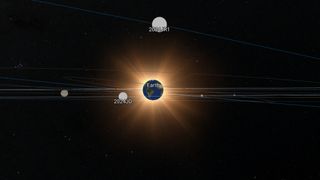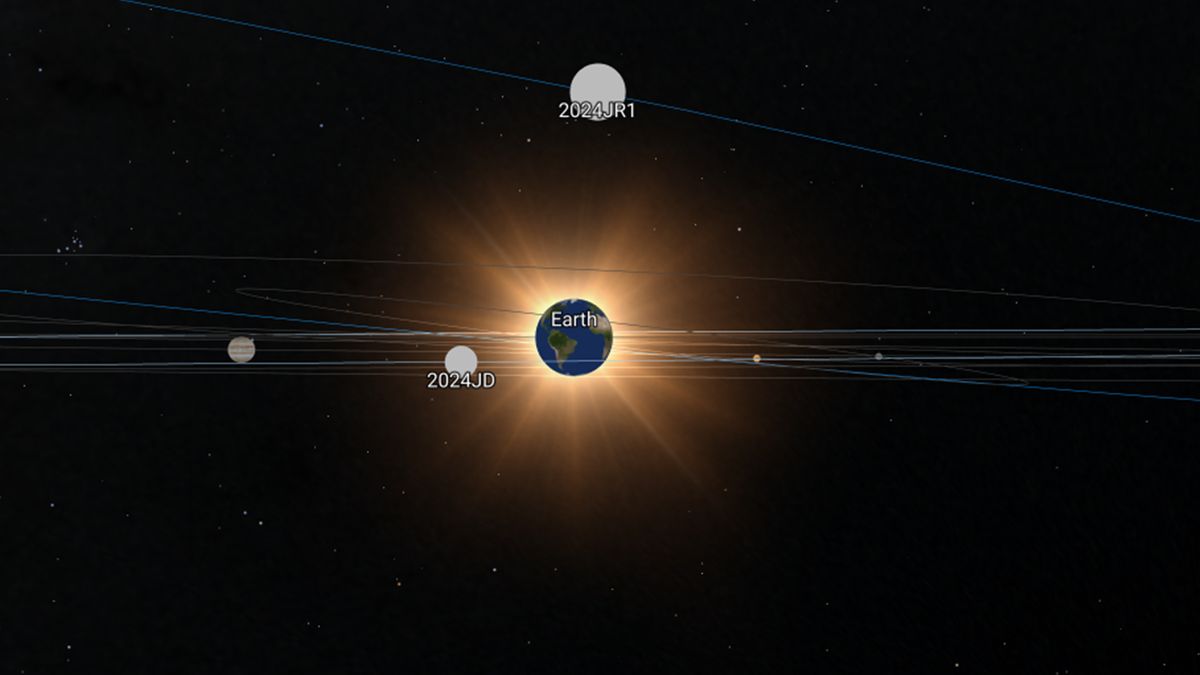Two bus-sized asteroids will zip past Earth closely but safely this week, starting with a 7-meter-long (22-feet) space rock named 2024 JF that’s expected to pass by on Monday (May 6) evening.
Astronomers expect 2024 JF to make its closest approach at 8:04 p.m. ET tonight (1204 GMT on Tuesday). It will be followed by the 10-meter-long (32-feet) asteroid named 2024 JR1, which is expected to make its closest approach on Tuesday (May 7).
You can watch both encounters live starting on Monday at 3:30 p.m. ET (0730 GMT), courtesy of the Virtual Telescope Project.
Related: What are asteroids?

The first space rock will be about 295,000 miles (475,000 kilometers) from our planet at its closest approach, according to estimates from Asteroid Watch, a dashboard by NASA’s Jet Propulsion Laboratory of near-Earth asteroids and comets. It tracks objects whose orbits bring them within 4.6 million miles (7.5 million kilometers) of Earth, or nearly 20 times the distance to the moon.
Meanwhile, 2024 JR1 will approach at a closer distance, about 184,000 miles (296,000 kilometers) of our planet, just three days after being discovered. At its closest distance to Earth, the space rock will be closer to our planet than the moon, which is on average at over 230,000 miles (370,000 kilometers). The asteroid will be in the constellation Ursa Major during its closest approach, while 2024 JF will be in Boötes, according to The Sky Live.
Two days after the above two space rocks zoom past Earth, another space rock named 2024 JD will approach our planet from roughly 172,741 miles (278,000 kilometers), just a week after being discovered. This is less than the distance from Earth to the moon, but like the other two asteroids, 2024 JD poses no danger to our planet.
This year alone, astronomers have cataloged close to 40 asteroids whose orbits have snuck them between Earth and the moon, the Watchers reported. NASA has cataloged nearly 35,000 near-Earth objects till date, few of which pose any real risk of striking Earth.

